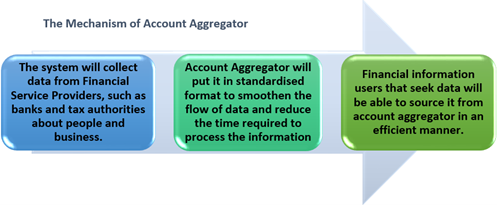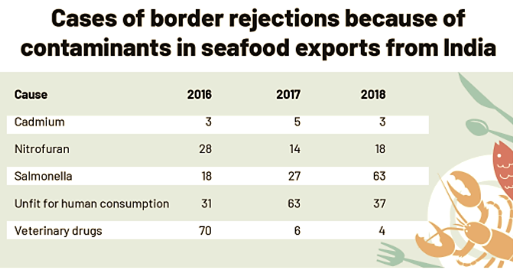Monday, 6th September 2021
Digital Health IDs
In News
Delhi and Tamil Nadu are planning to issue digital health IDs to enable residents to access their health records from anywhere.
About the news
- The initiative by the state governments is in line with the National Health Policy (NHP), 2017, which seeks to implement the National Health Stack, under the National Digital Health Blueprint, an action plan for implementing comprehensive and holistic digital health.
- In his Independence Day speech the Prime Minister has announced the creation of a digital health ID for every Indian under the National Digital Health Mission (NDHM).
- The NDHM aims to create a digital ecosystem for healthcare through the creation of personal digital health IDs, unique identifiers for doctors and health facilities and personal health records. At a later stage, there is also a plan to integrate telemedicine and e-pharmacies into this.
What are Digital health IDs under the NDHM?
- Repository: Digital health IDs will lead to the creation of a digital repository of all health-related information of a person.
- The health ID will enable citizens to interact with healthcare providers and allows you to receive digital lab reports, prescriptions, and diagnosis seamlessly from verified healthcare professionals and service providers.
- ID Generation: There will be two options for generating this 14-digit number — one by using Aadhaar and the other by using the phone number.
- Participation design: It is free of cost, voluntary and consent-based, an individual will have the option to link all of their health records to this ID or to stay out of this. The primary custodian of all such data is the user.
- Efficient Healthcare System: Patients will be able to securely store and access their medical records (such as prescriptions, diagnostic reports, and discharge summaries), and share them with health care providers to ensure appropriate treatment and follow-up.

Sources:
Climate Change: India may see loss of $6 trillion by 2050
In News
A recent report released by Deloitte has pointed that India may see loss of $6 trillion by 2050 due to climate change.
About the News
A report on climate action and economic future recently released by Deloitte pointed out that if an emission pathway is pursued where global average warming increases by more than 3°C by 2070, it would lead to economic losses of more than $6 trillion in present value terms by 2050 — or approximately 6% of India’s GDP in 2050 alone.
Findings of the Report
- Monetary loss: Climate change can cause monetary losses to the tune of $6 trillion by 2050 to India.
- Industries at loss: The top five industries likely to be most impacted by climate-related losses are services, manufacturing, retail and tourism, construction and transport — these currently account for more than 80% of the country’s GDP.
- Damage costs: Rise in average global temperatures will bring significant challenges such as rise in sea levels, fall in crop yields, damaged infrastructure.
- Period for change: The report talks about a narrow window of time—the next 10 years—to make the decisions needed to alter the trajectory of climate change.
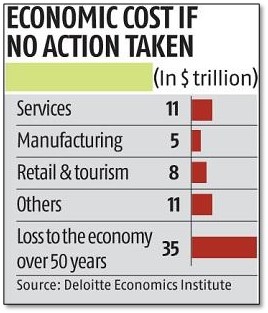
What is the opportunity for India in this scenario?
- Decarbonization: India could gain US$11 trillion in economic value by 2070 by limiting rising global temperatures and realizing its potential to ‘export decarbonization’ to the world.
- Renewable plans: India plans to have 450 giga-watt (GW) of installed renewable energy capacity by 2030, up from the current level of 100 GW.
- Investments: India can tap the opportunity of global investment in new clean power capacity, which is set to exceed $10 trillion through the mid-century.
- India is considered as a “red hot investment opportunity” in the renewable sector.
Source:
- Climate Change: India may see loss of $6 trillion by 2050
- India’s turning point
- India could gain $11 trn in 50 years with climate action: Deloitte report
Rules for Taxing Contributions to EPF
In News
The Finance Ministry has notified the rules for taxing interest income on contributions made to the Employees’ Provident Fund (EPF).
About the News
- Background: As of now, interest earned on provident fund balance is fully exempted from tax in the hands of the employee.
- Taxable contribution: Interest income on contributions made to the EPF beyond Rs. 2.5 lakh (for private sector employees) and Rs.5 lakh (for government sector employees) will be taxed.
- Rule 9D: According to Rule 9D, income through interest accrued during the previous year that is not exempt (over Rs 2.5 lakh for private and Rs 5 lakh for government employees) shall be computed as the interest accrued during the previous year in the taxable contribution account.
- Separate Accounts to be maintained: Separate accounts within the provident fund account will be maintained during 2021-2022 and subsequent years for an individual’s taxable and non-taxable contribution.
- Perpetuity of Tax: The interest income on the additional contribution (over Rs 2.5 lakh for private and Rs 5 lakh for government employees) for a year will get taxed every year.
- This means that if a person’s annual contribution to PF in FY22 is Rs 10 lakh, the interest income on Rs 7.5 lakh (10 lakh minus 2.5 lakh) will get taxed not only for FY22 but also for all subsequent years.
Need for the New Rules
- There are instances where some employees are contributing huge amounts to these funds and are getting the benefit of tax exemption at all stages i.e., contribution, interest accumulation and withdrawal.
- With an aim to exclude high net-worth individuals (HNIs) from the benefit of high tax-free interest income on their large contributions, the government has proposed to impose a threshold limit for tax exemption. This will be applicable for all contributions beginning April 1, 2021.

Source:
- Explained: What are the rules for taxing interest on Provident Fund?
- Explained: New rules of taxing interest on EPF; how to calculate
- Calculation of taxable interest on PF contributions – Government issues notification
- EPF contributions exceeding Rs 2.5 lakh? You will now have two PF accounts
Image source:
Climate Law in India
In News
Recently, the European Union approved a landmark law to make the EU’s greenhouse gas emissions targets legally binding, paving the way for a policy overhaul to cut planet-warming pollution faster.
About the News
- The law aims to put climate at the heart of all EU policymaking, ensuring that future regulations support the emissions-cutting aims.
- Around the world, climate laws are emerging as blueprints of national action plans for mitigation and adaptation.
- Just in 2021, countries as diverse as Canada and Russia approved laws on the climate crisis.
- As deadly heatwaves, flooding and strong storms are battering countries and temperatures are more than 1C above pre-industrial levels, such laws would avoid the most severe impacts of climate change.
What is Climate Law?
There are at present two general visions of climate legislation, globally.
- The first is a law decreeing a limit on greenhouse gas emissions — most “net-zero” laws in the West articulate such explicit caps.
- The second focuses less on achieving numerical targets and lays out instead the architecture for a nation’s low-carbon transformation.
- The carbon-capping law, however, is commonly misunderstood to be the only form that a climate law can assume.
- Countries which have enacted legislation in this regard are New Zealand, United Kingdom, France, Sweden, and Scotland.

Need for Climate Laws in India
- Fulfil Climate Commitments: India has committed to reduce carbon emissions, but environmental experts feel that targets will not be achieved effectively unless there is stringent legislation to deal with the issue.
- Under the Paris Agreement, India pledged to reduce the emission intensity of its gross domestic product (GHG emissions per unit GDP) by 33-35 per cent over 2005 levels by 2030 and create additional carbon sink of 2.5 -3 billion tonnes of CO2 equivalent through additional forest and tree cover.
- High Emitter: For a sprawling and unwieldy democracy such as India, a climate law may well be necessary for a coherent effort to meet the challenge. Given India is globally the third highest emitter of CO2, it has the potential to avoid locking into high carbon futures, and is severely threatened by rising temperatures, Indian climate law is a necessity.
- Set Accountability Mechanism: What we lack is an accountable system which tackles climate change for the benefits of communities, especially the poor and marginalised people. So, the Climate Legislation will bring in accountability.
- Limitations of Current Plans: While policies and plans do advance an agenda, they have fundamental limitations. In and of itself, a policy does not make the government legally bound to meet the specific targets in the policy. The legally binding effect is achieved only through Acts of Parliament or state legislatures.
- Need of the Economy: For the economy to reach $5 trillion, it will take the types of reforms like massive reductions in regulations, streamlining of labour laws, privatisation of state entities and investments in infrastructure.
- The impacts of climate change, such as drought and pollution, have the potential to devastate lands that these rural farmers rely on for their livelihoods.
Challenges to making and Climate law in India
- Delicate matter: Designing a climate law apt for the Indian political context is a difficult task — it will have to bring in a delicate balance between mitigation, adaptation, and development.
- Problems in the Current Laws: While low-carbon development likely brings economic opportunities, there remain uncertainties and questions about whether hard, time-bound caps might impose development costs, particularly on the poorest.
- National prosperity and global responsibility dichotomy: Given India’s limited historic contribution to the problem and low per capita emissions, a carbon-capping law, which may be seen as restricting energy choices, is unlikely to win broad political support.
- Difficult Transformation: Given the above challenges, any target set is likely to be relatively modest, and fail to induce transformative change. Even if an ambitious target is stipulated, it would be difficult to gather the requisite large-scale cooperation.
How should the Climate Law be shaped in India?
- Prepare the Sectors: An effective law, instead of beginning with deadlines and limits, should first seek to prepare sectors of the economy. By focusing on institutional, technical, and financial capacity building, such a law would attempt to lay the structural foundations for success in mitigation and adaptation.
- Bottom-up Approach: A climate law should conceptualise the climate crisis as shaping the context for the nation’s developmental path. This can be done by establishing positive feedback loops that mainstream low-carbon growth into state and national roadmaps, strategies, and budgets.
- Research and Investment: An enabling law that cradles research and prompts investment in green technology might be far more effective in securing India’s long-term economic prosperity than a hastily enacted net-zero or carbon-capping law, which might prove ineffective, unenforceable, or debilitating.
- Link to Disaster management: Climate law must be integrated with Disaster management law, as preparedness, planning, and response are necessary in climate action. Climate protection and DM will be able to together prepare the local communities to anticipate and respond.
Conclusion: Despite having no obligation, as a developing country, to tackle emissions, India is coordinating comprehensive policies across the economy covering both mitigation of greenhouse gas emissions and adaptation. An alternate approach to climate legislation must, therefore, be seriously considered in the Indian context, one that isn’t restricting but enabling of a low-carbon transformation. A Climate law will help institutionalise the implementation, monitor and adjudicate the processes, especially focusing on technology, science and law.
Question: Discuss the need for enacting a climate law in India. How should the climate law in be shaped for effective transformation?
Sources:
John Dalton
On September 6, 1766, the British scientist John Dalton was born. Although a schoolteacher, a meteorologist, and an expert on colour blindness, John Dalton is best known for his pioneering theory of atomism. The theory of atomism is the foundation for our modern concept of the atom. He also developed methods to calculate atomic weights and structures and formulated the law of partial pressures.

Source:
Blue Lobster
This is the image of a rare blue lobster, which has been recently caught by a fisherman in Scotland. The chance of catching this lobster is said to be one in two million. The colour of the blue lobsters is caused due to a genetic abnormality that makes them produce a certain type of protein in more than required quantity.

Sources:
Device for Bio Experiments in Space
- Context: A team of researchers from Indian Space Research Organisation (ISRO) and Indian Institute of Science (IISc) has developed a device to carry out biological experiments in space.
- It is a modular, self-contained device to cultivate microorganisms which could enable scientists to carry out experiments in space.
- The device uses an LED and a photodiode sensor combination to track the growth of a bacterium called Sporosarcina pasteurii over several days by measuring the optical density or scattering of light like spectrophotometers used in the lab with minimal human involvement.
- It has separate compartments/cassettes where bacteria suspended as spores in a sucrose solution and a nutrient medium can be mixed to kick-start growth by flicking on a switch remotely.
- Data from each cassette is collected and stored independently. Three cassettes are clubbed into a single cartridge and four such cartridges carried in a spacecraft can carry out 12 independent experiments in space.
- Understanding the behavior of such microbes in extreme environments could provide valuable insights for human space missions such as Gaganyaan – India’s first crewed spacecraft set to be launched in 2022.

Source :
IISc, ISRO develop device for bio experiments in space
ISRO, IISc researchers develop device to carry out biological experiments in space
Image source:
ISRO, IISc researchers develop device to carry out biological experiments in space
First Asian Country to launch a Plastics Pact
- Context: A team of researchers from Indian Space Research Organisation (ISRO) and Indian Institute of Science (IISc) has developed a device to carry out biological experiments in space.
- It is a modular, self-contained device to cultivate microorganisms which could enable scientists to carry out experiments in space.
- The device uses an LED and a photodiode sensor combination to track the growth of a bacterium called Sporosarcina pasteurii over several days by measuring the optical density or scattering of light like spectrophotometers used in the lab with minimal human involvement.
- It has separate compartments/cassettes where bacteria suspended as spores in a sucrose solution and a nutrient medium can be mixed to kick-start growth by flicking on a switch remotely.
- Data from each cassette is collected and stored independently. Three cassettes are clubbed into a single cartridge and four such cartridges carried in a spacecraft can carry out 12 independent experiments in space.
- Understanding the behavior of such microbes in extreme environments could provide valuable insights for human space missions such as Gaganyaan – India’s first crewed spacecraft set to be launched in 2022.
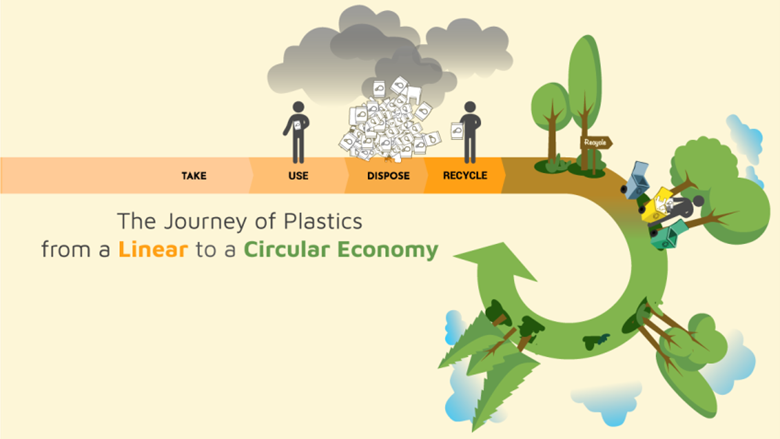
Source :
- India to be the first Asian country to launch a plastics pact
- India to become first Asian country to launch a Plastics Pact
Image source:
Behler Turtle Conservation Award
- Context: Indian biologist Shailendra Singh has been awarded the Behler Turtle Conservation Award for bringing three critically endangered turtle conservation species back from the brink of extinction.
- Established in 2006, the Behler Turtle Conservation Award is a major annual international award honouring excellence in the field of tortoise and freshwater turtle conservation and leadership in the chelonian(turtle) conservation and biology community.
- It is widely considered the Nobel Prize of turtle conservation and biology.
- The award is co-presented by the Turtle Survival Alliance (TSA), the IUCN/SSC Tortoise and Freshwater Turtle Specialist Group (TFTSG), the Turtle Conservancy (TC), and the Turtle Conservation Fund (TCF
- Red-crowned Roofed Turtle (Batagur kachuga), Northern River Terrapin (Batagur baska), and Black Softshell Turtle (Nilssonia nigricans) are the three critically endangered turtles being conserved as a part of TSA India’s research, conservation breeding and education programme.
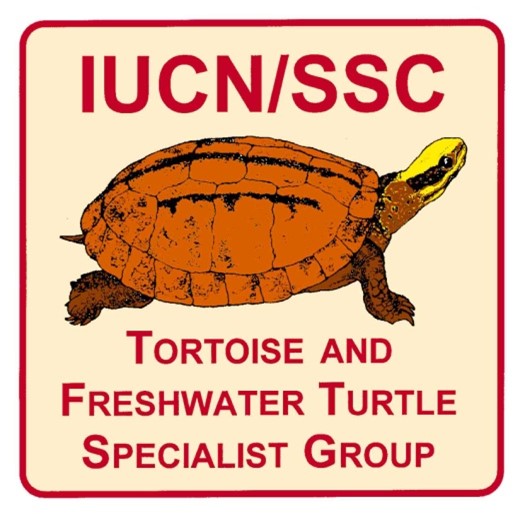
Source:
Image Source
Bhitarkanika National Park - Edukemy Current Affairs
- Context: Environmentalists have expressed concerns over the massive diversion of fresh water from the Brahmani river basin that could pose a threat to Bhitarkanika National Park.
- Bhitarkanika is the 2nd largest Mangrove ecosystems of India and the core area of the sanctuary is the land for impeccable biodiversity.
- It is a notified Ramsar wetland which is home to 62 mangrove species and is the breeding place for the endangered saltwater crocodiles.
- The Gahirmatha Beach which forms the boundary of the sanctuary in the east is the largest colony of the Olive Ridley Sea Turtles.
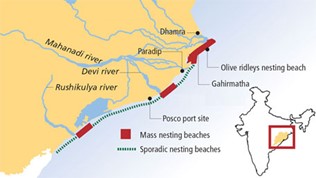
Source:
- Bhitarkanika National Park
- Experts express concern over diversion of fresh water from Odisha’s Brahmani river
image source:
To tackle nutrition challenges, we must also address sanitation issues- IE
p>Essence: The editorial points out that during covid times, nutritional insecurity is amongst the worst problems confronting the youth of India. National Family Health Survey (NFHS-5) says that acute and chronic malnutrition has worsened in children below the age of 5.
With grave signs of stunting and wasting, the situation in India is much worse than other developing countries. Causes are inadequate dietary intake, contaminated drinking water, poor sanitation and unhygienic living conditions (WASH). Poor WASH conditions lead to a sub-clinical condition called as “environmental enteropathy”, which causes nutritional malabsorption and chronic gut injury. An integrated approach to nutritional security and WASH sensitive measures could go a long way to build healthy young resources for the nation.
Why you should read this article?
- To understand the intricate linkage between WASH, nutritional insecurity and health
- To understand about various malnutritional challenges in a youthful body.
Source :
The key to revitalizing India’s reservation system- TH
Essence: There has been a renewed debate on the affirmative actions in Indian democracy lately. The provisions present for marginalized sections have not translated into equalization of life and removal of disabilities. Rohini Commission’s report on sub-categorization of OBCs found that 97% of central OBC quota benefits go to just under 25% of its castes. As many as 983 OBC communities — 37% of the total — have zero representation in both central government jobs and admissions to central universities.
Over and above, there is shortage of credible data, especially at state and local levels. The editorial suggests ways to initiate context-sensitive, evidence-based policy options and an institution alike Equal Opportunities Commission. They could help to create a deprivation index, policy formulation and undertake an audit on performance of institutions working for equity.
Why you should read this article?
- To decipher the magnitude of marginalization within OBC community
- To understand the alternatives for bringing equity in Indian context
Sourace :
Reaching out to the ‘undesirables’- TH
Essence: Conflict resolution is a complex process and involves making choices that may not be morally upright. Th editorial refers to India’s outreach to Taliban, who are on the verge of forming a government in Afghanistan.
Internationally, countries/institutions/people are condemned and made the devil out of many reasons- unethical, geopolitical considerations, ability to respond back to the accused, etc. Examples are North Korea, Cuba, Taliban. But governments need to go beyond such cynicism and rejection. Acceptance leads to initiation of a force to behave rationally and responsibly. International acceptance of Taliban as eventual leaders of Afghanistan is the inevitable truth.
Why you should read this article?
- To Gauge the possibilities of Taliban leadership and their acceptance internationally
- To understand the perspective of morality and pragmatism in reference to Taliban
Reading at Home: Rural Jodhpur
Background
- Discontinuation of school and classroom during pandemic
- Lack of reading habit among children.
- Compromised learning as online education for children is not available for primary children.
About the initiative
- Philanthropist: Prem Chand Sakhla and NGO Room to Read started an initiative under the International Reading Campaign 2021 in rural Jodhpur to bring books to the children.
- Theme: ‘Nahi Rukhenge Nanhe Kadam; Ghar Par Bhi Sikhenge Hai Hum’
- Portable library: Decorated camel carts are used as the library for children in remote villages and hamlets.
- Inculcating interest: Stories are narrated to children by the teacher, the NGO member, and the local educated villagers.
- Involvement of parents: Parents are involved by conducting reading, writing and mentoring for children at school.
Outcome
- Cultivation of better cognitive response, language skills, discipline for the children.
- Creation of accessible source through the concept of book issues at the comfort of home.
- Employment generation for the camel cart owners during pandemic who are carrying the library.
Quote
Reading should not be presented to children as a chore or duty. It should be offered to them as a precious gift. —Kate DiCamillo
Where can it be used
Paper 1: Society and Social Issues, Education, Human Resources.
Paper 2: Development Processes, Role of NGOs, SHGs
Source:
Share the article
Get Latest Updates on Offers, Event dates, and free Mentorship sessions.

Get in touch with our Expert Academic Counsellors 👋
FAQs
UPSC Daily Current Affairs focuses on learning current events on a daily basis. An aspirant needs to study regular and updated information about current events, news, and relevant topics that are important for UPSC aspirants. It covers national and international affairs, government policies, socio-economic issues, science and technology advancements, and more.
UPSC Daily Current Affairs provides aspirants with a concise and comprehensive overview of the latest happenings and developments across various fields. It helps aspirants stay updated with current affairs and provides them with valuable insights and analysis, which are essential for answering questions in the UPSC examinations. It enhances their knowledge, analytical skills, and ability to connect current affairs with the UPSC syllabus.
UPSC Daily Current Affairs covers a wide range of topics, including politics, economics, science and technology, environment, social issues, governance, international relations, and more. It offers news summaries, in-depth analyses, editorials, opinion pieces, and relevant study materials. It also provides practice questions and quizzes to help aspirants test their understanding of current affairs.
Edukemy's UPSC Daily Current Affairs can be accessed through:
- UPSC Daily Current Affairs can be accessed through Current Affairs tab at the top of the Main Page of Edukemy.
- Edukemy Mobile app: The Daily Current Affairs can also be access through Edukemy Mobile App.
- Social media: Follow Edukemy’s official social media accounts or pages that provide UPSC Daily Current Affairs updates, including Facebook, Twitter, or Telegram channels.

